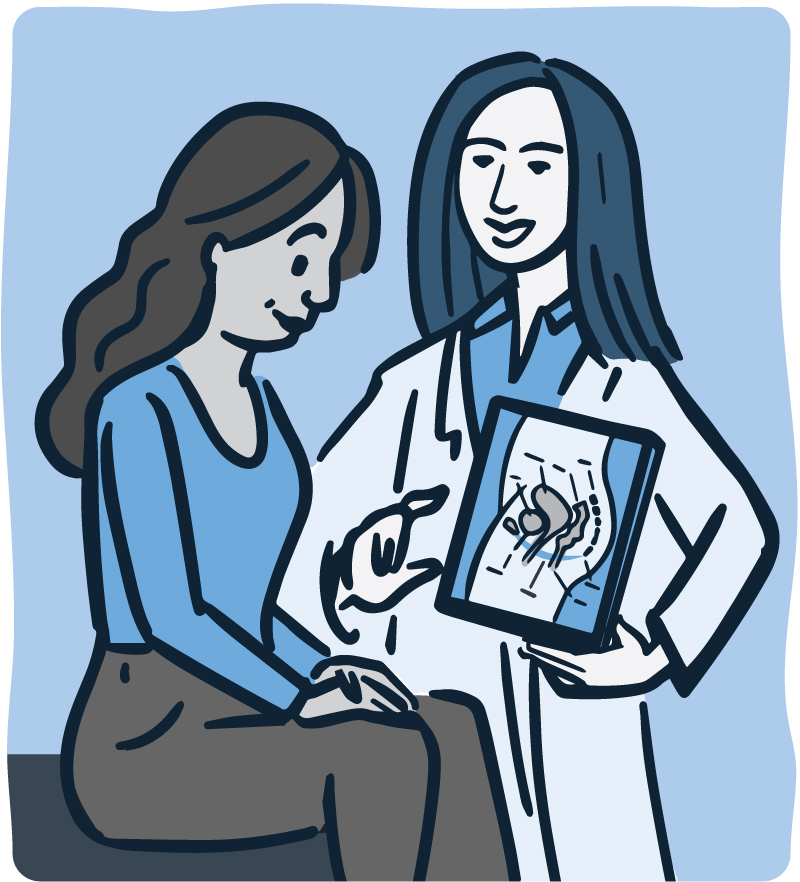Power to the Pelvis
Strengthening Your Pelvic Floor Muscles

Some conditions may feel too embarrassing to discuss with your doctor. Weak pelvic floor muscles can cause such conditions.
You may have trouble with bladder or bowel control. Urine can leak out when you cough, sneeze, laugh, or exert yourself in any way. You might need to urinate often or urgently.
Weak muscles can also affect the vagina and uterus. You may feel discomfort inside your vagina. Telling your doctor about these conditions can help you get the right treatment.
Your bladder, bowel, vagina, and uterus are held in place by a hammock of muscles called the pelvic floor. Weak muscles can’t hold up these organs. That can cause your bladder to leak and other embarrassing conditions called pelvic floor disorders.
Pelvic floor disorders affect women of all ages. Experts estimate that 1 of every 3 women in the United States has a pelvic floor condition. But because so many women don’t tell their doctor, they’re probably much more common.
Many factors—including family history, pregnancy, menopause, weight, and smoking history—can affect your risk for developing a pelvic floor disorder. Dr. Donna Mazloomdoost, a pelvic floor specialist at NIH, says, “Some women are just going to be very prone to these sort of conditions, and others are not.”
Depending on the condition, treatment options may include dietary changes, physical therapy, medications, medical devices, or surgery. NIH is funding studies to develop new and improved treatments.
“Most of the game-changing recommendations have come from studies that the Pelvic Floor Disorders Network has done,” says Mazloomdoost, who is the director of this NIH program. It funds some of the largest, multicenter pelvic health studies across the country.
A recent study from the network showed that women who urinate too often or leak urine may be treated successfully with Botox (botulinum toxin) injections. Another treatment that helps with bladder control uses a surgical implant to electrically stimulate the pelvic muscle nerves. Stimulating the nerves appears to help the bladder relax more.
“My first advice to all women with symptoms would be to see a pelvic floor specialist,” Mazloomdoost says. “Often times, physical therapy is the first treatment recommended because just about every pelvic floor condition will benefit from it. Some conditions, however, may need more than just physical therapy to get better.”
Pelvic floor physical therapy often begins with simple pelvic floor exercises. Some of these are known as Kegel exercises. They make the pelvic muscles stronger. Any woman can benefit from these exercises. Ask your health care provider how to do them correctly.
Mazloomdoost explains that Kegels performed at home may not work for some women with a pelvic floor condition. This may be because women don’t hold the exercises long enough, and they don’t do enough of them during the day.
“Physical therapy involves monitoring and measuring the amount of strength that the muscles are using and making sure that the correct muscles are being used—and for often enough and long enough,” she says.
Women who have a pelvic floor condition don’t have to suffer. Treatments are available. “If you have any problem with your bladder function or what your vagina feels like, then I think it’s absolutely important to speak with your doctor about it,” Mazloomdoost advises.
NIH Office of Communications and Public Liaison
Health and Science Publications Branch
Building 31, Room 5B52
Bethesda, MD 20892-2094
Contact Us:
nihnewsinhealth@od.nih.gov
Phone: 301-451-8224
Share Our Materials: Reprint our articles and illustrations in your own publication. Our material is not copyrighted. Please acknowledge NIH News in Health as the source and send us a copy.
For more consumer health news and information, visit health.nih.gov.
For wellness toolkits, visit www.nih.gov/wellnesstoolkits.




